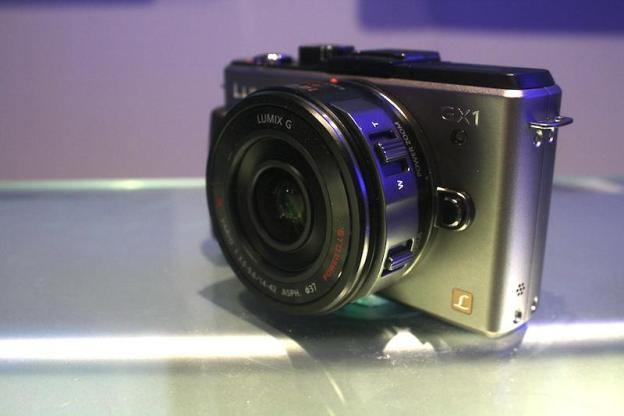
The Lumix GX1 (not to be confused with the Canon G1 X) is Panasonic’s latest ICL release and one of the newest cameras to hit the micro four-thirds market. Panasonic’s been in on this segment since the beginning, along with the Olympus PEN series, but hasn’t risen to quite the same esteem as some newer entries.
We’ve seen manufacturers fill out their MFT lineups: those meager first tip-toes into this territory are now fleshed out series, appealing to consumers of all skill levels and price brackets (relatively speaking). Panasonic’s MFT products have been somewhat tailored to the middle market, but the GX1 is without a doubt its top of the line MFT camera.
Of course these devices come with their drawbacks, and the GX1 is no exception. DSLR shooters will immediately notice and miss high speed shooting (you have 20fps continuous shooting with this camera but the resolution decrease makes using it a sacrifice) and bigger sensors are simply better. But these are the exceptions you make for a MFT camera, and luckily Panasonic has included more than a few benefits.
For starters, the accessories that shooters can add to the device are a serious upgrade. The new LVF2 viewfinder ($250) is crisp and clear, and there was little to no distortion that you can experience with external viewfinders. And Pansonic’s new standard zoom 14-42mm/F3.5-F5.6 (35mm equivalent) HD lens is so smooth and quiet that video will be much improved, and it’s also considerably slimmer than the kit lens.
We’re also happy Panasonic went with a boxier, flat-top style. The GF3 has a bubble-like exterior, with a shiny, toy-like coating. It’s clear that Panasonic wants to reach a different consumer with this product (it’s also more reliant on auto mode and presets), and given the MFT/compact ICL rise to popularity, it’s not a terrible idea. But it feels a little premature: for the most part, we still think like those willing to shell out +$450 on a camera want a little more. The GX1, depending on your kit option, ranges from $950-$900 (it’s $700 for the body only).
And that’s where the GX1 comes in. It’s a more serious camera for a more serious consumer. Still, it’s a crowded market, and manufacturers are taking these cameras’ specs up by leads and bounds–and doing it quickly. It’s going to be difficult for some brands not to get lost in the crowd.
Check out the GX1’s specs, and our hands-on video below.
- 16-megapixel, ¾ sensor
- Full HD 1080/60i video
- ISO 60-12800
- 3-inch 460k touchscreen LCD display
- Built-in flash and hot shoe
Editors' Recommendations
- Amazon discounts this point and shoot Panasonic Lumix camera by $100
- The Panasonic Lumix S5: Everything we know
- Panasonic takes on Sony in the vlogging camera game with compact Lumix G100
- Leica SL2 vs Panasonic Lumix S1R: Two L-mount leaders with one big difference
- Panasonic Lumix S1H camera will offer limitless 6K recording for $4,000


